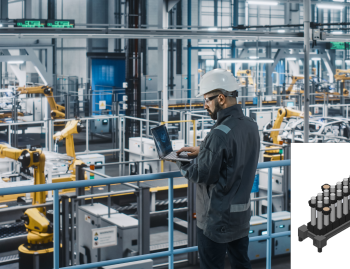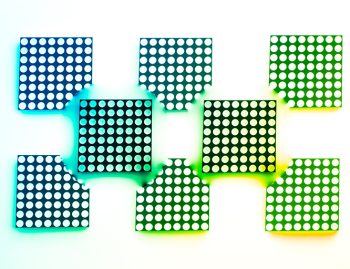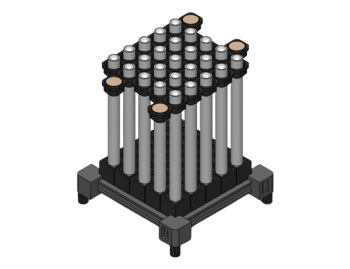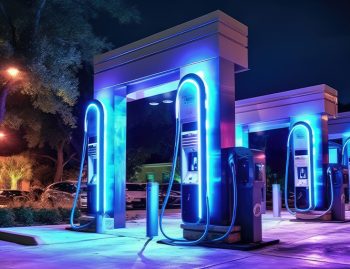
Light pipes can significantly improve the performance of devices using LEDs for indication, functional illumination, backlighting, or general illumination. Selecting a light pipe is a more nuanced process than it might seem. There are a number of variables involved – the application can affect the choice of light pipe, but the choice of light pipe can also improve design and performance. Read on to understand how and why.
What are your design constraints?
Ideally, OEMs would investigate light pipes at the same time as they make other design and buying decisions. If you’ve already made design decisions or even purchased components, you’ll need to consider them to choose an appropriate light pipe.
Full LED specifications
The diameter of the light pipe needs to be selected to maximize the amount of light coupled from the LED into the light pipe. If the light pipe is too narrow, light emitted at broader angles from the normal escapes; too wide, and light that enters the angles beyond the critical angle will not propagate, causing optical losses.
The operating wavelength of the LED is also important. The optical transmittance of the materials used for light pipes varies as a function of wavelength (see Figure 1). Light pipes are typically made of either polymethylmethacrylate (PMMA) or polycarbonate. PMMA provides better short wavelength performance, so it might be more effective for devices using UV or blue output. Polycarbonate has other advantages, however, which we will discuss below.

Figure 1: For shorter wavelength applications, consider wavelength-dependent transmittance of optical materials before making a choice.
Lens diameter and viewing angle
Light pipes can be specified for different viewing angles. For devices that will typically be viewed from the front, like rack-mounted servers, a light pipe with a flat-face or countersunk lens will restrict viewing angle. For indication lights that require broad visibility, like alarm panels, domed lenses provide visibility from the side; the steeper the dome, the broader the viewing angle.
What are your board-level design considerations?
Board layout can constrain the choice of light pipe—conversely, the right light pipe can remove some constraints on board layout. For boards that are highly congested, a panel-mounted light pipe that just hovers over the LED may work better, assuming it satisfies other requirements. At the same time, if there’s no room on the board near the panel but there is elsewhere, a flexible light pipe can be used to route LED output over long distances and around obstacles. These flexible light pipes also make it possible to separate LEDs from clusters of heat producing electronics to increase lifetime.
There are some limitations to keep in mind, however. Flexible light pipes require board-mounted adapters, consuming more space. The PCB needs to be able to support this.
It’s important to know the distance from the LED to the indication point and also whether the two are in the same plane. Both rigid and flexible light pipes can redirect output, but this needs to be made clear up front (see Table 1).
| Parameters | Rigid | Flexible |
| Distance Requirement | Up to 3 inches | Up to 100 meters |
| Bending or Shaping Requirement | Vertical, Right Angle | Bend around obstacles |
Table 1: Layout parameters for rigid and flexible light pipes
What do you know about your application environment?
Building a design that performs is not enough. It needs to perform in the designated environment – that’s where the right light pipe can help (see Table 2).
Will the device be exposed to contamination or moisture?
Light pipe systems are available capable of protection ratings from IP54, IP67, and IP68 (see Figure 2). Solutions vary from using only sealing rings to adding washers and retaining nuts to provide a compression fit. Achieving the rated performance of many of these components requires an exact panel thickness, so be sure to check that your components and assembly procedures can match data sheet specifications to within tolerances.
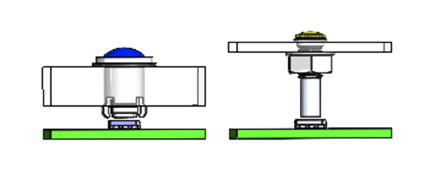
Figure 2: Light pipes can be designed to provide IP54 ratings in a simple press fit design (left) or IP68 ratings in a design that incorporates washers and a hex nut (right). The components shown are rigid light pipes but similar performance is available from flexible light pipes.
What about humidity or high temperatures?
As every engineer knows, there is no one perfect solution. PMMA may offer improved performance at shorter wavelengths, but it has a lower softening temperature than polycarbonate. It also has higher water absorption than other optical plastics, decreasing dimensional stability. For moist environments at high temperatures, polycarbonate may be a better choice.
Does it involve high levels of shock and vibration?
Crush ribs provide a friction fit that is suitable for many applications but high shock and vibration applications benefit from the additional stability offered by board-mounted adapters or additional mechanical retaining hardware (see figure 3).

Figure 3: Press-fit board-mount adapters (left) and additional mechanical retaining hardware (right) can ensure light pipe system performance in high shock and vibration applications.
| Panel-Mount | Board Mount | ||||
| Front Mount | Rear Mount | Press Fit | Solder On | ||
| Type of light pipe | Rigid | Rigid | Flexible and rigid | Flexible and rigid | |
| IP protection | Yes | No | Yes, for flexible | Yes, for flexible | |
| Shock and vibration resistance | High | Low | High | High | |
| Light bleed | Yes | Yes | No | No | |
| Best used for | All types of environments | Clean environments |
All types of environments | All types of environments | |
Table 2: Protection offered by various mounting types
Is light bleed a concern?
For some applications, light spilling out from the space between the LED and the end of a panel mount light pipe can impact the appearance, performance, or user experience of a product. Bivar’s ZeroLightBleedTM light pipes eliminate light bleed, for single devices or for arrays.
Conclusion
Light pipes can significantly improve the design, performance, manufacturing, and lifetime of a device. Make a list of characteristics and application constraints to ensure proper selection. Work closely with your vendor – they can help you arrive at the most economical and effective solution. Most importantly, start the light pipe selection process at the beginning of the design cycle. It won’t just lead to better product, it can very likely simplify the process and help you get that product to market faster.



